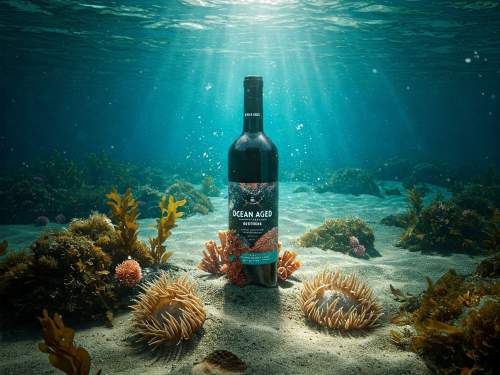Exploring The Fascinating World Of Ocean-Aged Wine
Wines are usually aged under meticulously-curated conditions to help them develop a smoother, richer flavor, but now a new trend is sweeping wineries worldwide: aging wine at the bottom of the ocean. It turns out the sea naturally offers the perfect microclimate within which to mature wine. This exciting revelation was first made in 2010 when hundreds of bottles of champagne were retrieved from the Baltic sea as part of a shipwreck that occurred in 1852. The wine, promptly sampled, was discovered to be immaculately preserved and surprisingly tasty. Now, numerous wineries are experimenting with ocean-aged wine, although the U.S. is off to a slower start as the FDA previously prohibited it due to health and safety concerns.
Ocean wine’s first foray in the U.S.
Napa’s Mira Winery became the first American winery to trial ocean aging in 2013. In a novel, yet short-lived, experiment, they submerged four cases of their 2009 Cabernet Sauvignon into the Charleston Harbor in South Carolina, sixty feet below the surface and in special twelve-bottle cages. The bottles were retrieved and sampled alongside their land-aged counterparts. The differences between the two stunned the Mira winemakers, who described the ocean-aged wine as “more complex, open, and relaxed”. Eager to discover more about the potential of underwater aging, Mira intended to continue with their experiments, but, frustratingly, the FDA put a stop to them. According to the public health regulators, wine aged in the ocean may be unfit for human consumption. The thinking is that if the bottle seals are damaged, the wine could get contaminated with potentially harmful germs and bacteria. This in spite of Mira’s chemical analysis of the wines, which showed the bottles were uncontaminated and the wax seals still intact.
Croatian ocean-aged wine comes to the U.S.
Fortunately, in 2022, the FDA finally started to permit imports of ocean wine into the country, and Americans can now purchase ocean-aged wine made by Croatian company, Adriatic Shell/Wine of the Sea. These winemakers submerge a variety of red and white wines 75 feet below the surface of the ocean where it’s left for two years. Once retrieved, the bottles are covered in pretty coral, and the wine itself tastes amazing. According to winemaker Domogoj Skuliber, the process of underwater aging is much faster than traditional methods. Ocean-aged wines seem at least three years “older” than land-aged wines of the same age. However, Skuliber has discovered that only certain wines do well underwater — ones with the right ratio of tannins and acidity. Bottles are now on sale in certain states at prices between $150-$200.
What makes ocean-aging so effective?
When you think about it, conditions in the depths of the ocean aren’t too different from those offered by expensive wine cellars. Consistently low temperatures, relative humidity, and virtually no light — this is the environment that helps wines get better with age, whether on land or at sea. Ideally, wines do best when they're kept anywhere between 45°F and 65°F as long as temperatures remain stable. In these conditions, sealed wine can be stored for decades and develops an even richer, more pleasing flavor profile over time. Underwater, bottles also benefit from being gently nudged by the current, which dislodges sediment. Discouraging to remove excess yeast from the bottle before drinking is therefore no longer required.
In fact, to test the true effectiveness of underwater aging, French Champagne House, Veuve Clicquot recently submerged 350 Champagne bottles in the Åland Vault 131 feet below the surface of the Baltic Sea, which is famous for its remarkably low salinity. The expert winemakers suspect ocean aging will produce amazing wine due to the consistent 39°F temperatures throughout the year—no matter what fluctuations may be going on on the surface. This is in combination with zero oxygen and high humidity levels. The team will retrieve the bottles every so often over a forty-year period to take samples.
Ocean-aged wine is an exciting new trend set to take the wine world by storm, and it's not hard to understand why. Whether you sample underwater wine in the U.S. or from innovative wineries elsewhere, your taste buds are certainly in for a treat.

